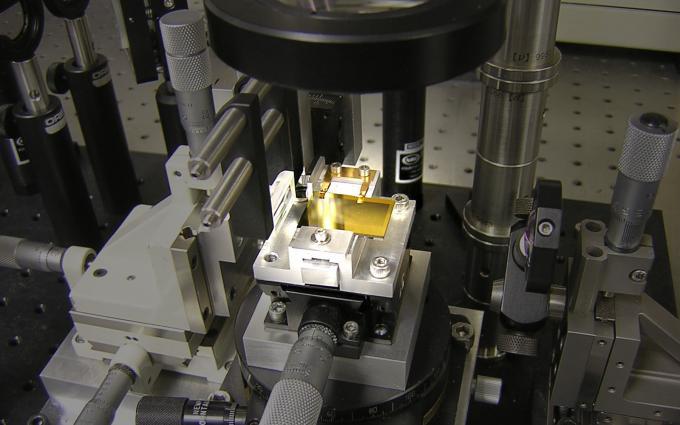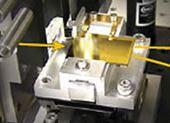Conventional signal recording technologies include vacuum tube oscilloscopes and digital oscilloscopes. Vacuum tube oscilloscopes are becoming obsolete. Digital oscilloscopes rely largely on state-of-the-art electronic-based analog-to-digital converters that have exhibited very slow improvement in recent years and are limited to trading off dynamic range or bit depth for temporal resolution. Streak cameras are capable of higher performance but below 10 ps resolution, they suffer in dynamic range due to space-charge repulsion effects occurring within the electron beam. This invention abandons electronics and turns to a novel rapid optical deflection technology in order to provide a "next generation" optical signal recording device. SLIDER does this by deflecting a signal-carrying optical beam propagating in the plane of a slab waveguide at a sweep rate of 1 resolvable spot per picosecond. The swept beam can then be recorded in parallel and on a single-shot basis (without averaging) on an ordinary, high dynamic range camera.
The SLIDER deflector includes a waveguide, a serrated mask positioned above the waveguide cladding, and a synchronized pump beam. The pump beam illuminates the serrated mask with a short pulse and transfers its pattern to the guiding layer where it imprints a sequence of prisms. The prisms are activated via nonlinear optical effects in the semiconductor and persist for the duration of the sweep. The signal beam is coupled into the waveguide and is deflected in piecewise segments by the fine sequence of prisms. Time-of-flight through the waveguide ensures a linear mapping of time to angle. Lenses at the output of the map the deflection onto the focal plane of a high fidelity camera where the signal can be recorded in parallel with high resolution and with high dynamic range.
This system achieves high resolution (picosecond) with a high dynamic range (> 3000:1) by eliminating electrons as in a conventional streak camera and replacing them with photons that do not suffer space-charge effects. It also has the potential to be produced with components at a reasonable cost.
Characterization of pulsed signals as in long-haul, high bandwidth optical telecommunications, Measurement of ultrafast optical signals in R&D laboratories.
LLNL has developed and used this technology.


